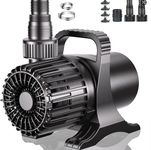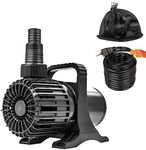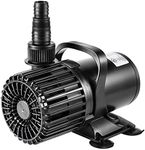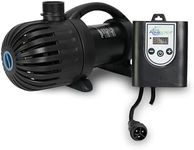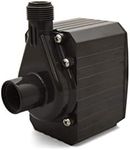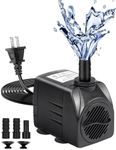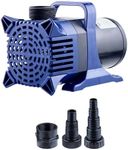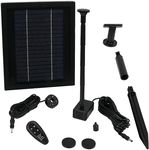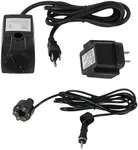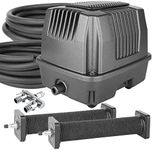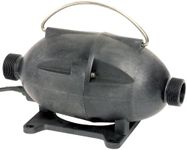Buying Guide for the Best Pond Waterfall Pumps
Choosing the right pond waterfall pump is essential for maintaining the health and beauty of your pond. The pump is responsible for circulating water, which helps to oxygenate the pond and keep it clean. When selecting a pump, you need to consider several key specifications to ensure it meets your needs and provides the best performance for your pond and waterfall setup.Flow RateFlow rate, measured in gallons per hour (GPH), indicates how much water the pump can move in an hour. This is important because it determines the strength and appearance of your waterfall. For small ponds and gentle waterfalls, a lower flow rate (up to 1,000 GPH) is sufficient. Medium-sized ponds and moderate waterfalls typically require a flow rate between 1,000 and 2,000 GPH. Large ponds and dramatic waterfalls need a higher flow rate, often exceeding 2,000 GPH. To pick the right flow rate, consider the size of your pond and the desired effect of your waterfall.
Head HeightHead height, or maximum lift, is the maximum height the pump can push water. This is crucial for ensuring the water reaches the top of your waterfall. If the head height is too low, the pump won't be able to deliver water to the desired height. For small waterfalls, a head height of up to 5 feet is usually adequate. Medium waterfalls may require a head height between 5 and 10 feet, while large waterfalls might need a head height of over 10 feet. Measure the vertical distance from the pump to the top of the waterfall to determine the necessary head height.
Energy EfficiencyEnergy efficiency refers to how much electricity the pump uses to move water. This is important for keeping your operating costs low and reducing environmental impact. Pumps with higher energy efficiency will have lower wattage and consume less power. Look for pumps with energy-saving features or those labeled as energy-efficient. If you plan to run your pump continuously, investing in an energy-efficient model can save you money in the long run. Consider your usage patterns and choose a pump that balances performance with energy consumption.
Durability and Build QualityDurability and build quality determine how long the pump will last and how well it can withstand the elements. This is important for ensuring reliable operation and minimizing maintenance. Pumps made from high-quality materials like stainless steel or durable plastics are more resistant to wear and tear. Look for pumps with good reviews and warranties, as these can indicate better build quality. If your pond is in an area with harsh weather conditions, choose a pump designed to handle those conditions. Consider the environment and select a pump that offers longevity and reliability.
Noise LevelNoise level refers to how much sound the pump produces while operating. This is important for maintaining a peaceful and enjoyable pond environment. Quieter pumps are preferable, especially if your pond is near living areas or places where you relax. Noise levels can vary significantly between models, so look for pumps that are specifically designed to operate quietly. If noise is a concern, read user reviews and product descriptions to find a pump that meets your noise level preferences. Consider the location of your pond and how much noise you are willing to tolerate.
Maintenance RequirementsMaintenance requirements refer to how often and how easily the pump needs to be cleaned and serviced. This is important for ensuring the pump continues to operate efficiently and has a long lifespan. Some pumps have features that make maintenance easier, such as removable parts or self-cleaning mechanisms. If you prefer low-maintenance options, look for pumps that are designed to be easy to clean and require minimal upkeep. Consider your willingness and ability to perform regular maintenance when choosing a pump.
